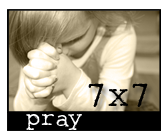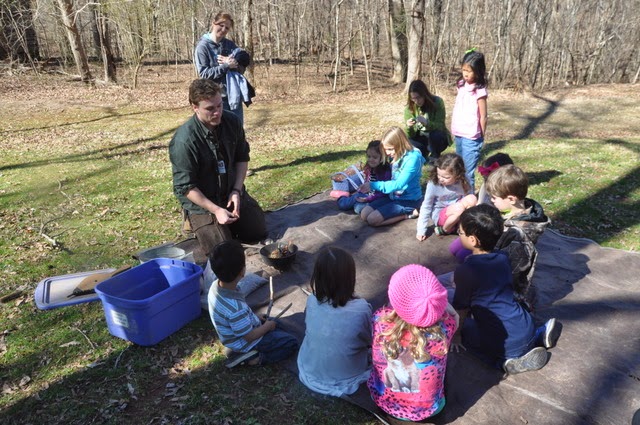the mill
the dam
seeing how early Americans started fires
churning and tasting butter
exploring and playing
learning how the Native Americans used trees in their trapping, medicines, transportation, and every day living.
Learning to start a fire without flint...the Native American way
Ephram was in heaven as he usually is when he's in nature:)
playing games using vine hoops and corn cobs...just like games children played 100's of years ago
throwing a spear
Me and my babies
Cailey:
We went on a field trip to Eno River State park to learn about the Indians who lived there 600-1000 years ago. The tribes who lived there were Eno, Cherokee, and Creek. A tour guide taught us how they made fire, trapped animals, and created weapons.
We also learned that children had a lot more work to do than we do today. Some of the things that the children had to do was take live animals out of traps, collect wood for fire, and start fires. The Indian children had to wake up before the sun rose to do their many morning chores before breakfast.
The weapons that the Indians used to hunt their food were bows, arrows, and spears. They made weapons out of sticks, rocks, animal parts, and vines. The Cherokee used every single part of the animals they hunted. The Eno Indians used the deer brain to soften the deer hide so it would be flexible. Women and girls made beautiful baskets out of reeds and berry dye. The baskets that they made were woven so tight that they could hold water.
The Creek Indians lived together in longhouses. The Indians ate meat (including buffalo), berries, plants, and bread made from cornmeal and water. Indians continued living there until Americans kicked them out in the 1500's.
Braden:
Today we toured Eno Park in the city of Durham. The field trip was focused on settlers who lived there 300 years ago and the Indians who did up to 1000 years ago. As soon as everyone arrived we were introduced to the tour guide and he told us what we would be doing. After we were split into two groups, Grant (our tour guide) took us to see a creek. It had a mill on it which was used for grinding corn into corn mill.
Next we trekked to the Eno River and saw two great blue herons. Grant explained that men had dug the creek all the way from the river to the mill's water wheel. Then they made a gate under the bridge that could open and close when the water supply was low.
After exploring the Eno river we headed back to a grassy area for a few activities. Grant showed us how to make some simple traps and set them off. One of them was made by burning out the inside of a log and putting wood on one end. Then they would cut out pieces of wood and tie them together with string. The next step was to make holes in the log and put bait on the end stick. Last they put the sticks into the holes and wait for a small creature, such as a rabbit, to hop in. The pioneer children had a daily job of checking the traps every evening.
Then we walked to a different area where Grant showed us how to start a fire out of flint and steel (like the pioneers would have done). We all got to take a turn striking the flint striker to see how it worked. Back in the 1700's the settlers children would have to wake up early to start a fire. For our last activity before lunch we shook a jar of heavy cream until it turned into butter. We were able to taste some of it on a cracker and I thought it was yummy.
After lunch we trooped into the woods and looked at a special tree. The bark was rough and bumpy but the tree itself was perfectly straight. 1000 years ago Indians in the area (mainly the Eno, Creek, and Cherokee) made canoes out of this tree by slowly burning out the middle of it. During spring, since the trees would have water soaked in the middle, Indians would cut out a square of bark and bend it into a bag shape. Two of these wood pieces tied together with sinew string from a deers tendon made an Indian basket to wear.
We continued to hike for a while then stopped under a tree and sat down on logs. There, Grant showed us some skins, dishes, and arrows that the Indians would make. We also saw a fan that they made by putting leather on the bottom of a turkey feather and decorating it. Then we went to another spot and he taught us how the Indians made fire. They used a thick branch from a tree, get a board of wood, cut notches in it, then make a bow out of a thin piece of wood. Next they tied the end of it with a long piece of sinew string. Finally the Indians were ready to make a fire. To start it, Grant wrapped the sinew string tightly around the stick. Then he put it behind a notch and started turning the stick in a half circle shape. Soon he created a reddened coal of sawdust, dropped it into a nest of soft birch bark, and blew on it which started flames.
After extinguishing the fire we walked to a field to throw darts and spears. We played a game where everyone threw darts made out of corn cobs and feathers trying to make it into a hoop made from vines. Next everyone got to practicing throwing a long spear. Before leaving we all met at the barn to hear stories like ones that were told long ago for entertainment. My field trip to the Eno River State Park was interesting and fun.












































No comments:
Post a Comment